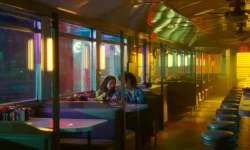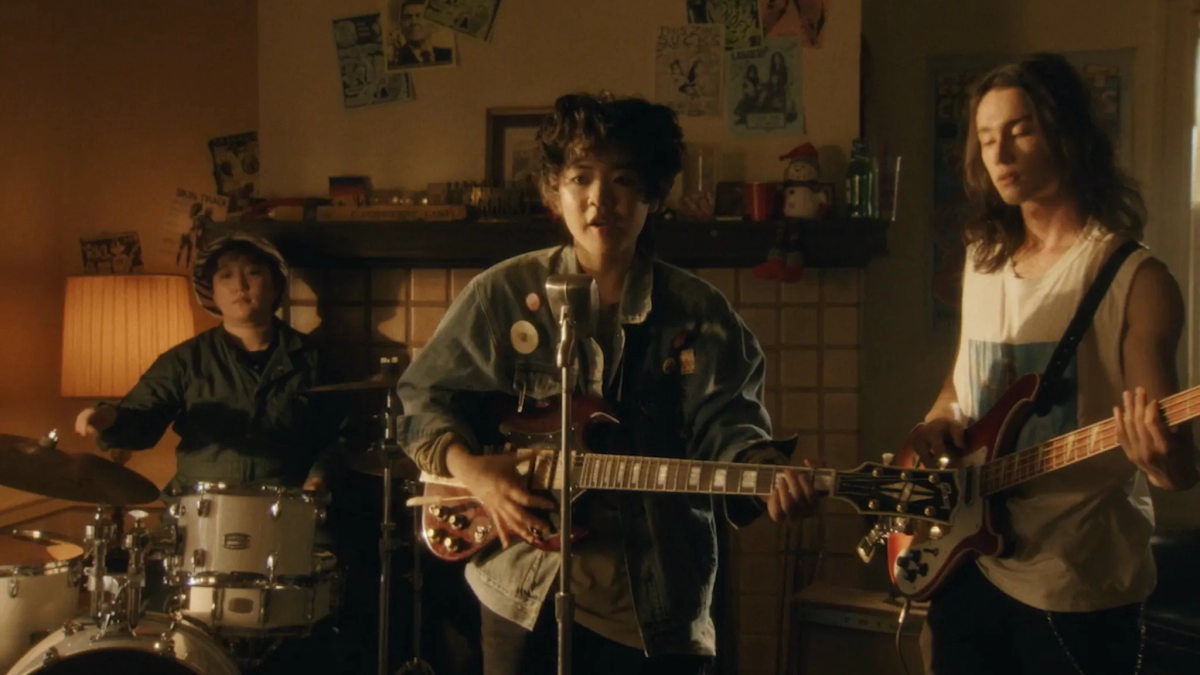How Memories Serve in the Creation of a Visual Album
Based on the memories of Bryan Cho (AKA The Black Skirts), Waley Wang’s “Teen Troubles in Dirty Jersey” works as both a narrative short film and a visual album for the artist as it chronicles his summer in 1999. Summers are a time for teenagers to go explore the world on their own and find themselves. This is no exception for Bryan (portrayed by Daniel Oliver Lee) and his friends as they navigate their last summer together — one filled with music, shenanigans, and newfound love and heartbreak.
In the process of creating the short and digging through Bryan’s memories, director Waley Wang found it quite easy to connect to him and flesh out a story. Wang added his own personal struggles to Bryan’s experiences since they both had their “teenhoods as diasporic Asian boys in the same parts of Bergen County,” despite having to change the flavor of his 2000s adolescence to the 1990s. Wanting nostalgia to serve a purpose, the recreation of their newly combined youths became a form of art therapy for them. For those who aren’t feeling too nostalgic about the recreation of Bergen County, New Jersey, the film still purposefully evokes a youthful sensation, and for the younger audience, it perhaps serves as a cautionary warning about the pursuit of thrills and excess.

(Image Credit: Waley Wang)
The film medium provides a look into Bryan’s past through a nostalgic lens. The memories, combined with the era-appropriate production design and equipment used to produce the visuals, create a sense of nostalgia that feels authentic. Being shot on film, there is a palpable feel to the textures of the visuals, as though the audience is watching it through the lenses of video camcorders and VHS tapes of the era. While all the memories, whether good or bad, contribute specifically to Bryan’s coming-of-age that summer, his story is also universal within the exploration of the self.
By the 1990s, punk rock had already been ingrained in western culture and was even going through a revival phase through pop punk that encapsulates themes of teenage rebellion and angst. Though the punk genre and culture were dominated by white people, Bryan was able to find acceptance within the community. Through this unique perspective, it became a goal for Wang to write “authentic adventures featuring an Asian character exploring themselves among non-Asians that love and support them,” proving that someone’s environment can have a direct influence on them. Punk rock truly shows no boundaries with its acceptance, and that becomes even more evident in the music.
The music of The Black Skirts plays throughout the entire visual album, providing a rebellious tone and sound that encompasses Bryan and all of his friends. The permeation of the punk rock genre into Korean music (which in fact contributed to the formation of The Black Skirts) showcases how influential this era was to Bryan, who is Korean American, in particular. In music, feelings are still conveyed through other aspects such as the instrumentation, composition, and vibes despite any possible language barriers in the lyrics, as The Black Skirts demonstrates. This allows us to look and listen beyond the white perspectives from which we often view this era of music.
A culmination of music and adventures over the course of a summer can have an impact on someone. Teen troubles are a part of growing up and exploring in your youth — how you go through it only becomes a part of your true self.
“Teen Troubles in Dirty Jersey” screened at the 15th Boston Asian American Film Festival.

